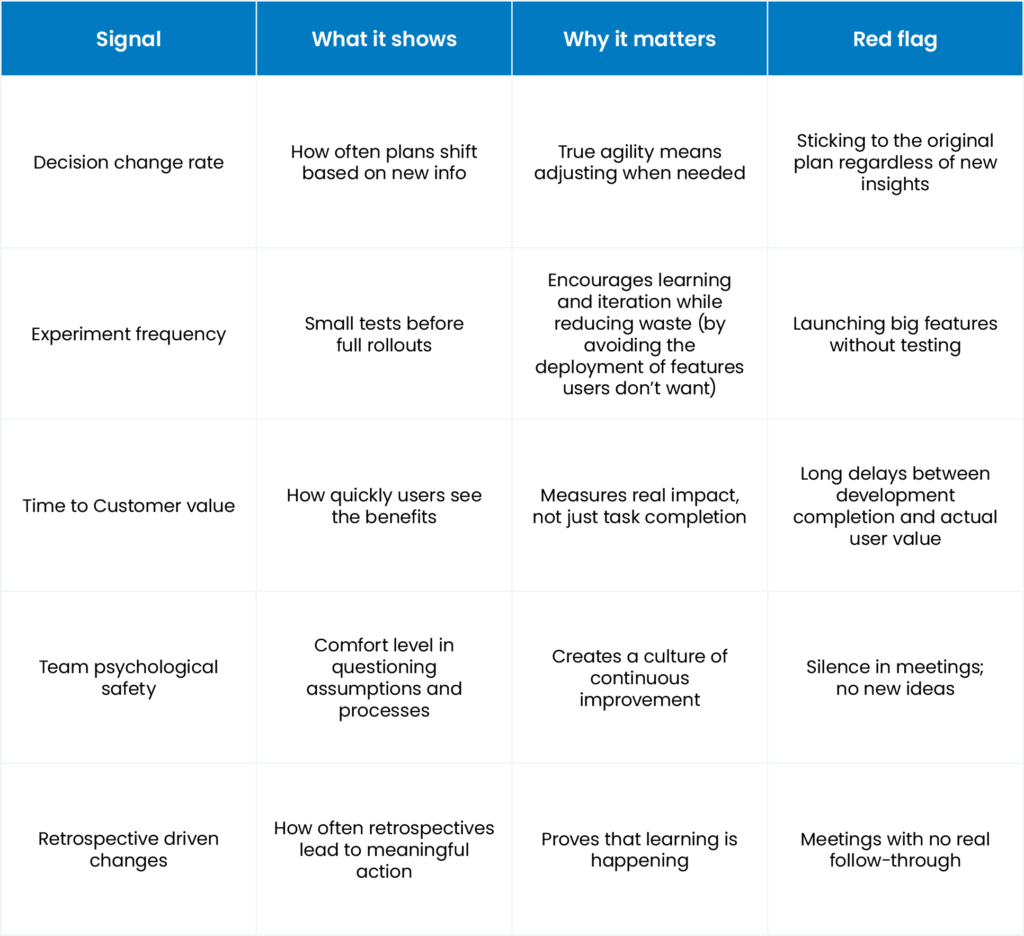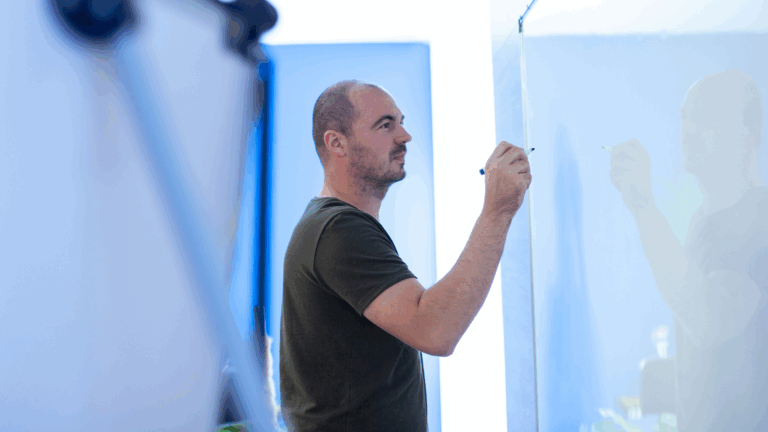ENG
- Branchen
- Finanzen
Nearshore-Softwareentwicklung für den Finanzsektor – sicher, skalierbar und Compliance-gerechte Lösungen für Banking, Zahlungsverkehr und APIs.
- Einzelhandel
Softwareentwicklung für den Einzelhandel – E-Commerce, Kassensysteme, Logistik und KI-gestützte Personalisierung durch unsere Nearshore-Engineering-Teams.
- Verarbeitende Industrie
Nearshore-Softwareentwicklung für die Industrie – ERP-Systeme, IoT-Plattformen und Automatisierungstools zur Optimierung industrieller Abläufe.
- Finanzen
- Was wir tun
- Services
- Technologien
- Kooperationsmodelle
Kooperationsmodelle passend zu Ihren Bedürfnissen: Komplette Nearshoring Teams, deutschsprachige Experten vor Ort mit Nearshoring-Teams oder gemischte Teams mit unseren Partnern.
- Arbeitsweise
Durch enge Zusammenarbeit mit Ihrem Unternehmen schaffen wir maßgeschneiderte Lösungen, die auf Ihre Anforderungen abgestimmt sind und zu nachhaltigen Ergebnissen führen.
- Über uns
- Wer wir sind
Wir sind ein Full-Service Nearshoring-Anbieter für digitale Softwareprodukte, ein perfekter Partner mit deutschsprachigen Experten vor Ort, Ihre Business-Anforderungen stets im Blick
- Unser Team
Das ProductDock Team ist mit modernen Technologien und Tools vertraut und setzt seit 15 Jahren zusammen mit namhaften Firmen erfolgreiche Projekte um.
- Unsere Standorte
Wir sind ProductDock, ein Full-Service Nearshoring-Anbieter für Softwareprodukte mit Hauptsitz in Berlin und Entwicklungs-Hubs in Lissabon, Novi Sad, Banja Luka und Doboj.
- Wozu Nearshoring
Wir kombinieren Nearshore- und Fachwissen vor Ort, um Sie während Ihrer gesamten digitalen Produktreise optimal zu unterstützen. Lassen Sie uns Ihr Business gemeinsam auf das nächste digitale Level anheben.
- Wer wir sind
- Unser Leistungen
- Karriere
- Arbeiten bei ProductDock
Unser Fokus liegt auf der Förderung von Teamarbeit, Kreativität und Empowerment innerhalb unseres Teams von über 120 talentierten Tech-Experten.
- Offene Stellen
Begeistert es dich, an spannenden Projekten mitzuwirken und zu sehen, wie dein Einsatz zu erfolgreichen Ergebnissen führt? Dann bist du bei uns richtig.
- Info Guide für Kandidaten
Wie suchen wir unsere Crew-Mitglieder aus? Wir sehen dich als Teil unserer Crew und erklären gerne unseren Auswahlprozess.
- Arbeiten bei ProductDock
- Newsroom
- News
Folgen Sie unseren neuesten Updates und Veröffentlichungen, damit Sie stets über die aktuellsten Entwicklungen von ProductDock informiert sind.
- Events
Vertiefen Sie Ihr Wissen, indem Sie sich mit Gleichgesinnten vernetzen und an unseren nächsten Veranstaltungen Erfahrungen mit Experten austauschen.
- News
- Blog
- Kontakt

04. Juni 2025 •3 minutes read
Is agile the right methodology for you?
Jovica Zorić
Chief Technology Officer
Imagine planning a road trip using the latest GPS and real-time traffic updates. You’ve set your destination and the GPS suggests the fastest route. But when you encounter unexpected construction or heavy traffic, you ignore the alerts and stubbornly stick to your original plan.
Sound familiar? This scenario perfectly illustrates how many organizations approach agility in software development – they have the tools but lack the mindset.
The illusion of agility
Many companies say they want to “go agile.” They introduce daily standups, organize work into sprints, and conduct retrospectives, expecting these ceremonies to automatically deliver faster results and higher productivity. But after a few months, frustration sets in—deadlines continue to slip, developers feel overwhelmed, and leadership starts questioning why agile “isn’t working.”
The truth is that agility isn’t about checking off a list of ceremonies—it requires a mindset shift. This transformation in thinking is precisely what many organizations claim to embrace but struggle to actually implement.
Let’s be real—many organizations are essentially looking for a “high-speed waterfall”—delivering everything they originally planned, just faster. They are committed to:
- A fixed, predetermined feature list
- Hard deadlines
- The same team structure and hierarchies
Then, they layer agile ceremonies on top, hoping it will magically improve the delivery process.
The real key to agility
Agility isn’t about speed—it’s about adaptability.
If you can’t shift priorities, adjust scope, or change direction when new information emerges, you’re not being agile—you’re just doing waterfall development with additional meetings.
For agility to work effectively, at least one of these must stay flexible:
- Scope: Being open to adjusting features based on user feedback and emerging market needs
- Timeline: Allowing reasonable flexibility in deadlines to accommodate meaningful and valuable improvements
- Resources: Being prepared to scale teams or provide additional support when needed
If all three are locked, you’re in waterfall territory — and that’s fine. Some projects can benefit from this approach, but expecting agile results without actual flexibility is a recipe for frustration.
I find this analogy particularly helpful in explaining the difference:
- Waterfall is like a canal—structured, controlled, and efficient for traveling along the predetermined path
- Agile is like a river—flowing, adapting, and sometimes finding better routes along the way
Organizations that merely “do agile” while keeping the rigid structures are essentially trying to turn a river into a canal while calling it agile. They want the predictability of waterfall with the speed promised by agile methodologies.
Measuring agility
We have sprints, we’re agile! Do you think that is true? How do you know if you’re actually agile? Look beyond velocity and burndown charts and consider these:

Agility is about developing adaptability that aligns with the needs of both the team and the product, especially in complex, unpredictable environments. In a setting where everything is stable and predictable, agility might not be necessary.
Stop “doing agile” — start “being agile”
Agility isn’t about rituals or tools—it’s about creating an environment where teams can handle change without chaos. Organizations need to stop forcing work into rigid plans and start trusting teams to find the best way forward.
Before kicking off another “agile transformation,” ask yourself: Do we actually want to be adaptable, or are we simply trying to move faster while maintaining rigid control?
The choice isn’t between agile and non-agile—it’s between being flexible and staying rigid. The most successful organizations understand that in today’s rapidly changing environment, adaptability isn’t just a methodology but also a competitive advantage.
Choose wisely, because true agility requires more than ceremonies — it demands courage, trust, and a fundamental shift in how we think about planning and execution.
What are your thoughts? How does your team approach agility?
Tags:Skip tags

Jovica Zorić
Chief Technology OfficerJovica is a techie with more than ten years of experience. His job has evolved throughout the years, leading to his present position as the CTO at ProductDock. He will help you to choose the right technology for your business ideas and focus on the outcomes.


